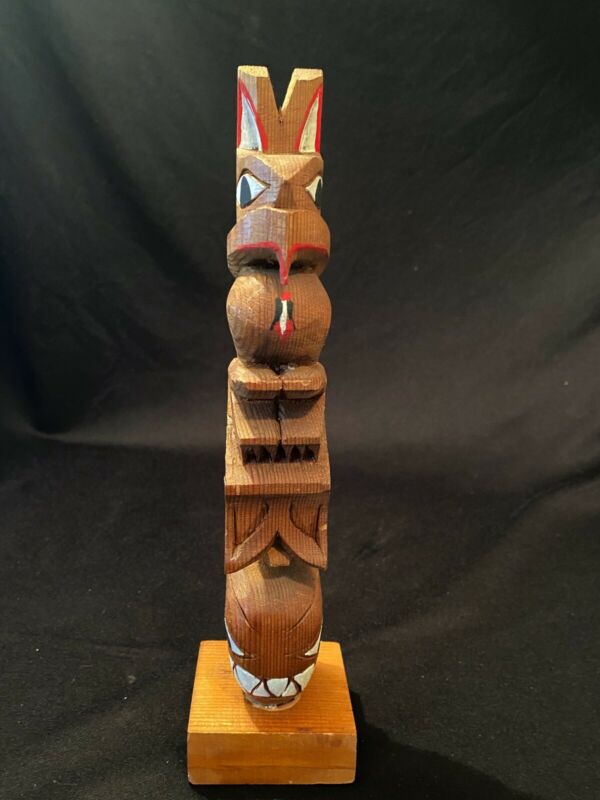-40%
1950 Banff Canada Indigenous Days Program Stoney Nakoda 1st Nation 5 1/4" X 10"
$ 3.69
- Description
- Size Guide
Description
1950 Banff Canada Indian Days Program Stoney Nakoda First Nation 5 1/4" X 10".T
he first Banff Indian Days was held in the late 19th Century as a way to entertain tourists trapped in Banff by spring flooding that destroyed the railway tracks. It remained a main tourist attractions through to its end in 1978. While tourists flocked to the grounds to see “real Indians,” the Stoney Nakoda, whose traditional territory included the Rocky Mountains subverted the annual event and used it to their advantage despite controls white organizers and park administrators placed upon them. “The event drew thousands at its peak. It was roughly a three to five day spectacle and reportedly it offered a glimpse of how real Indians lived 100 years ago,” said
Jonathan Clapperton, of the University of Alberta
at the University of Calgary and Stoney Tribal Administration. The popular literature used Banff Indian Days as evidence of aboriginal support for the national parks and all that it stood for, when in fact, the largely positive narratives failed to consider how the national parks affected aboriginal people. “It failed to acknowledge that the same people who organized it were also the same ones against aboriginal hunting in the national park,” Clapperton said. “Indians could not be allowed to run at will through the park as they would ruin it and disturb the balance of nature and destroy all the animals. And at the same time, they were desired … by bringing in tourists and boosting revenue to the park.” Despite the various levels of controls, boundaries and restrictions placed upon the Nakoda participating in Banff Indian Days, they were very much involved with defining what actually occurred during the festival by subverting these controls or shifting them to their benefit. The Nakoda also used Banff Indian Days as a way to challenge stereotypes, colonialism and assimilation. The Nakoda were even able to challenge class structures and use Banff Indian Days to “increase their standing among native people and non-native people as well,” Clapperton said. Chiefs accomplished this by adopting dignitaries from France, the U.S. and England, including the Prince of Wales during the 1919 event. Banff Indian Days organizers would use these adoptions as publicity for the event, unaware the Nakoda were using it as a way to criticize Canada’s government in a public setting. Nakoda leader Chief Walking Buffalo, Tatânga Mânî or George McLean, would mock the attitudes of tourists by reversing the stereotypes. “I know I might not understand what ‘civilization’ means. It’s your language, but I still think lots of times that you white savages do not know nothing about your word, the meaning of civilization,” Clapperton quoted Chief Walking Buffalo as telling one visitor to the grounds. The benefits the Nakoda received from Banff Indian Days meant they were prepared to fight to remain an integral part of the event. In 1938, the Department of Indian Affairs sought to limit Nakoda involvement in Banff Indian Days as it allowed them to continue their traditional practices, counter to Canada’s assimilation program, Clapperton said. Indian Affairs stated only 150 individuals could attend the 1938 event, but the Nakoda, along with Norman Luxton, refused, forcing the government to back down. It was a period of mutual support that would not last. Increased discrimination following the Second World War, a growing preservation movement to make parks more natural and a desire among organizers to keep Banff Indian Days authentic would begin to alter the balance of power by keeping out modern or hybrid aspects of aboriginal culture, such as the rodeo. Tommy Snow, a member of the Stoney Nakoda First Nation who provided cultural commentary on Banff Indian Days, said despite freedoms gained during Banff Indian Days, the Nakoda still had to practice much of their culture in secret. Given that much of Nakoda culture was forced underground, Snow cautioned researchers to consider their sources carefully as the some of the information about Nakoda culture has been corrupted. Banff Indian Days has since returned. Nakoda elder and artist Roland Rollinmud, working with Parks Canada employee Dennis Herman, initiated its revival in 2004. Today’s Banff Indian Days focuses on Nakoda culture and is seen as an opportunity to help Nakoda youth learn more about their heritage.
Seller
is a member of the American Political Item Collectors and guarantees authenticity. Purchaser pays .50 for 1
st
Class US Postal Service delivery within the US. Since the purchaser pays the shipping and I will combine the charges it makes sense to purchaser multiply items and save on shipping. I will add other shipping features and insurance or worldwide shipping at purchaser’s expense. If extras are desired contact I after purchase and I will modify invoice to reflect the extra cost. PLEASE LOOK AT THE POLITICAL ITEMS I HAVE LISTED!













